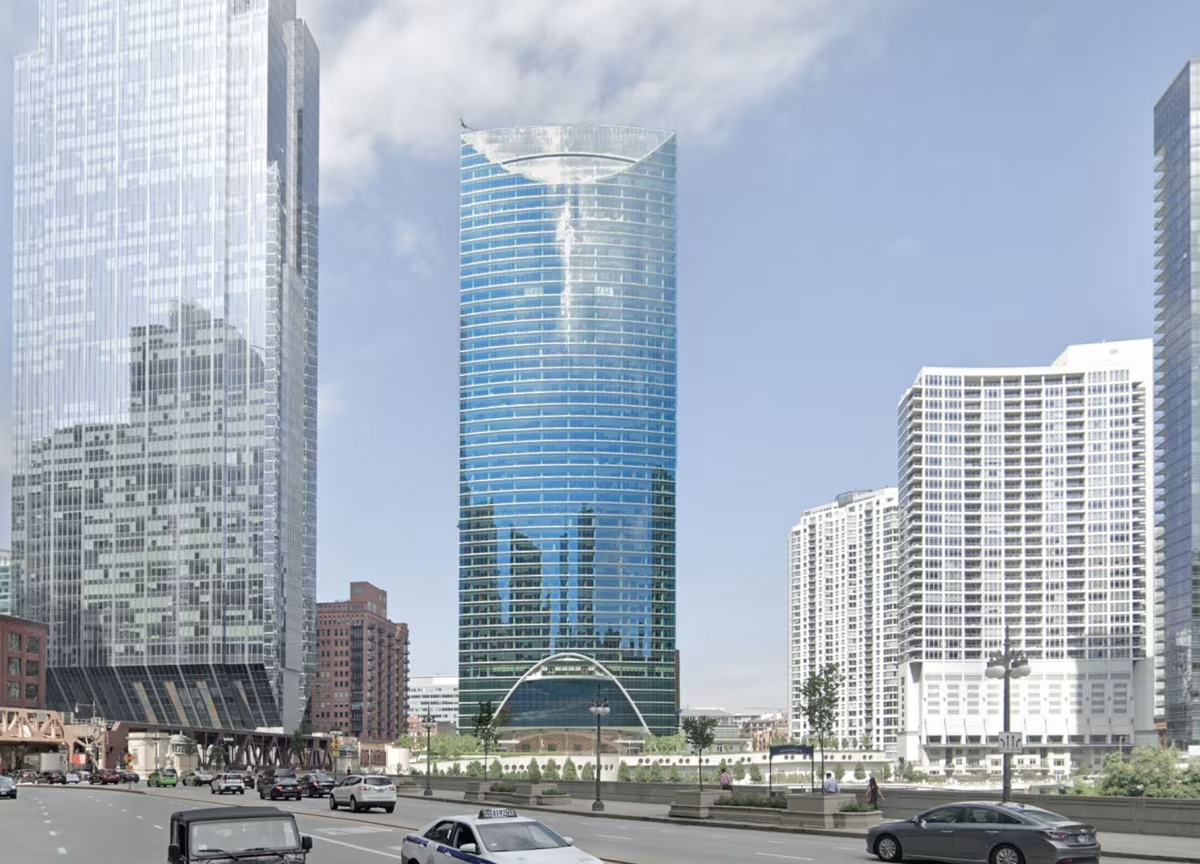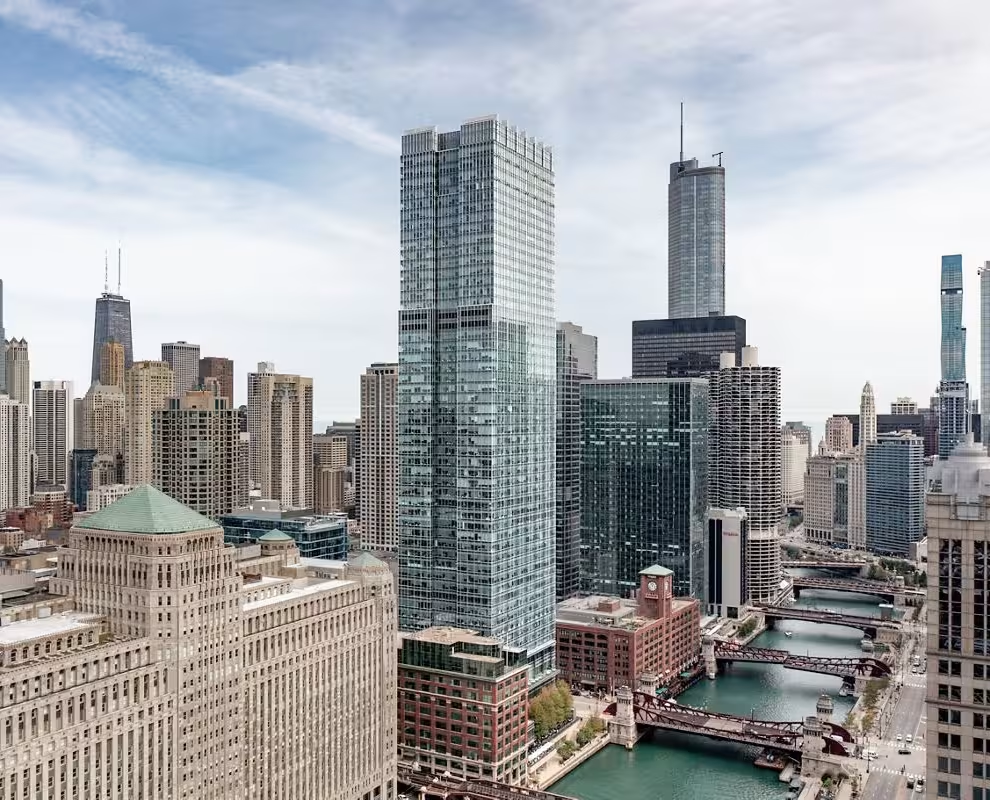River Point Tower vs 300 North LaSalle Building


Comparing the River Point Tower and the 300 North LaSalle Building is particularly interesting because they share the same skyline in Chicago, IL, and were both designed by Pickard Chilton. However, they were completed more than 9 years apart.
This offers a unique perspective on how the architect's style and the city's architecture evolved over time.
Height & Size
The 300 North LaSalle Building is clearly the larger tower of the two, both in terms of height and number of floors. It rises to 784ft (239m) with 57 floors above ground, while the River Point Tower reaches 732ft (223m) with 52 floors above ground.
Of course, each project may have faced different briefs or regulatory constraints, which we don't really know about and could also explain the outcome.
Architectural Style
Both the River Point Tower and the 300 North LaSalle Building were designed in line with the aesthetic conventions of the Contemporary style.
At the time, this style was at the height of its popularity. So Pickard Chilton followed what was in many ways expected at the time, producing designs that fit comfortably within contemporary architectural norms rather, than breaking with convention.
Uses
Both the River Point Tower and the 300 North LaSalle Building were designed to serve as commercial towers, and that has remained their main use since their completion, serving similar roles in the urban fabric.
Both towers provide significant parking capacity, with River Point Tower offering 160 spaces and the 300 North LaSalle Building offering 225.
Structure & Facade
Both the River Point Tower and the 300 North LaSalle Building rely on a Framed Tube In Tube structural system.
A tube-in-tube system combines a reinforced central core with a perimeter of columns connected by floor slabs. This arrangement creates a stiff structure that resists both vertical and lateral forces efficiently.
They also employ the same type of facade, a Curtain Wall facade.
A curtain wall is a non-load-bearing facade hung from the structural frame. It is anchored to floor slabs and transfers only its own weight and wind loads, allowing for sleek, glassy exteriors.
| River Point Tower | 300 North LaSalle Building | |
|---|---|---|
| Pickard Chilton | Architect | Pickard Chilton |
| 2013 | Construction Started | 2006 |
| 2017 | Year Completed | 2008 |
| Contemporary | Architectural Style | Contemporary |
| Commercial | Current Use | Commercial |
| 52 | Floors Above Ground | 57 |
| 1 | Floors Below Ground | 3 |
| 201 | Last Floor Height | 227 |
| 223 m | Height (m) | 239 m |
| 111,500 m² | Usable Area (m²) | 120,800 m² |
| 9 | Number of Elevators | 32 |
| Framed Tube In Tube | Structure Type | Framed Tube In Tube |
| Steel | Vertical Structure Material | Steel |
| Poured Concrete Over Metal Decking | Horizontal Structure Material | Concrete |
| No | Facade Structural? | No |
| Glass | Main Facade Material | Glass, Steel |
| Lend Lease | Main Contractor | Clark Construction |
| Hines | Developer | Hines |
| OJB Landscape Architecture | Landscape Architect | Wolff Landscape Architecture |
| Alvine Engineering | MEP Engineer | Alvine Engineering |
| Magnusson Klemencic Associates | Structural Engineer | Magnusson Klemencic Associates |
| Permasteelisa Group, And Curtain Wall Design And Consulting, Inc. | Facade Consultant | Permasteelisa Group |
| IL | State | IL |
| Chicago | City | Chicago |
| 444 West Lake Street | Address | 300 North LaSalle |